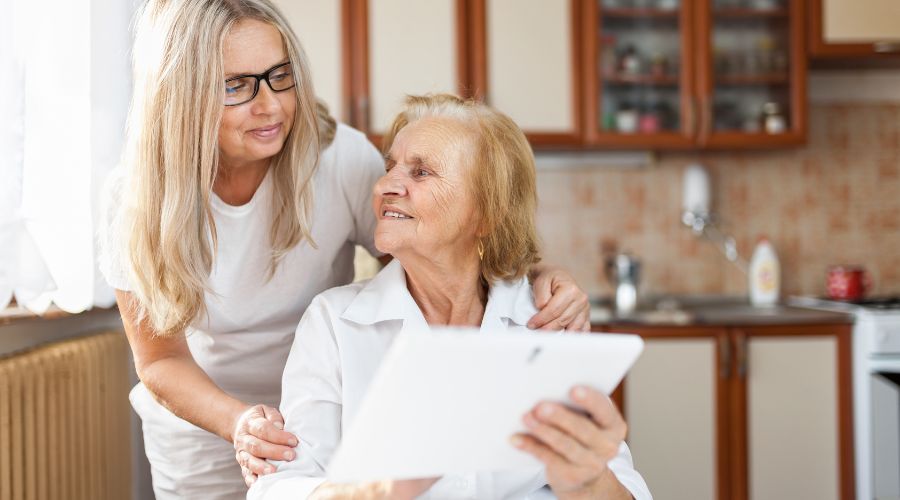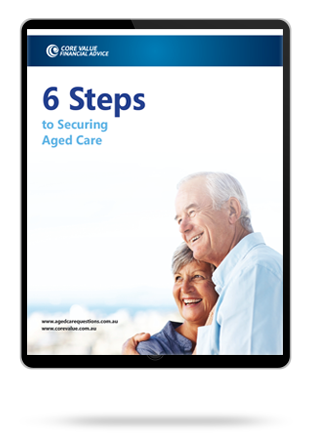Understanding what a protected person is for aged care purposes can mean the difference in thousands of dollars in aged care fees each year. It can also help you determine whether it is better to keep or sell the family home.
This article explores how a protected person affects aged care fees, who qualifies as a protected person, and how long a protected person can live in the family home.
In This Article
What is a Protected Person for Aged Care?
A protected person for aged care purposes is a specific type of person who will continue to live in the home of someone who has moved into a residential aged care facility.
The reason having a protected person continuing to live in the family home is important is because it will affect how the home is assessed for aged care fee purposes.
While there are a number of fees and costs associated with aged care, one such fee is the Means Tested Care fee. This fee is calculated based on the income and assets of the aged care resident.
Having a protected person continue to live in the family home determines whether or not the home will be assessed.
Who is a Protected Person for Aged Care?
A protected person for aged care purposes is someone who meets the definition of a partner, a dependent child, a carer or a close relative. In the case of a carer or close relative, additional criteria must also be met.
Listed below are the definitions for each type of aged care protected person.
Partner
The first and most common type of protected person is a partner. If a partner of a person moving into aged care continues to live in the family home, then the home will be exempt from aged care assessment.
Specifically, a partner is defined as the other member of a couple. A member of a couple includes the following relationships:
- A person legally married to another and not permanently living separately and apart, unless separated by illness;
- A person (same sex or different) in a prescribed and registered relationship under State or Territory law; or
- A person who lives with another (same sex or different) in a de facto relationship, although not legally married to the other.
Each of the definitions above meet the protected person status for the definition of a couple.
The next type of protected person is a dependent child.
Dependent Child
A dependent child of a person is generally defined as a person under 16 years of age (or aged 16-25 and in school, college or university) and the person moving into care is:
- Legally responsible for the day-to-day care and welfare of the child; or
- Under a legal obligation to provide financial support to the child.
Apart from a partner and dependent child, a carer or close relative can also be classified as a protected person.
Carer
To meet the definition of a carer for aged care protected person purposes, the carer needs to have lived in the family home with the person moving into aged care for a period of at least 2 years, while also being eligible to receive an income support payment.
To be clear, an income support payment includes a social security benefit, job search allowance, social security benefit, youth training allowance, service pension, income support supplement or veterans payment. That is, the carer does not necessarily need to be receiving a carer’s payment or carer’s allowance in respect of care for the person moving into care.
The final type of person who qualifies as a protected person for aged care purposes is a relative.
Close Relative
A relative is defined as a close relation of the person who has lived in the family home for the past 5-years and is eligible to receive an income support payment (as explained above).
A close relation includes:
- A parent of the person; or
- A sister, brother, child or grandchild of the person.
If any of these people – a partner, dependent child, carer or relative of a person will continue to live in the family home when that person moves into aged care, then the value of the home will be completely disregarded for aged care assessment and fee purposes.
Now that we’ve covered who a protected person is, what is the timeframe on how long a family home can be exempt from assessment as a result of a protected person living in it?
How Long Can a Protected Person Live in the Home?
A protected person can remain in the former home of an aged care resident for as long as they like and the home value will continue to be disregarded for aged care assessment purposes while they do. There is no timeframe on how long a home can be exempt while a protected person lives in it.
However, there are instances when a protected person is no longer a protected person, in which case the family home will cease to become an exempt asset for aged care assessment purposes.
What Happens if the Home Has No Protected Person?
If the family home of a person moving into aged care has no protected person in it from the beginning, or a person who was a protected person ceases to be a protected person, then the home will become an assessable asset up to the home exemption cap.
Related Article: Is the Family Home Counted as an Asset for Aged Care?
A person ceases to become a protected person if they no longer meet the definition of a partner, dependent child, carer, or relative. For example, if a carer or close relative ceases to be eligible for an income support payment at any stage, then they will fail to meet the definition of a protected person. In this case, the home will be assessed up to the home exemption cap.
Home Exemption Cap
The home exemption cap is applicable when a former home of an aged care resident is to be assessed for aged care means-tested fee purposes, because a protected person will not continue to live in it.
In this case, the value of the home that will be assessed is limited to the home exemption cap, which stands at $193,219.20 as of 1 July 2023. The net value of the home, above this cap amount, will be excluded from the value of the aged care resident’s assets.
Related Article: 6 Ways to Avoid Selling the Home to Pay for Aged Care
It should be noted that the home exemption cap applies to each member of a couple. That is, if a couple were to enter care and owned a family home, both would have $193,219.20 assessed as assets – assuming their share of the net value of the home exceeded this value.
Should an aged care resident’s net share of a family home (after associated debt) be less than the home exemption cap, then the lower value will be the amount assessed.
All of the information above relates to how a protected person impacts the aged care assessment of fees. Most aged care residents are also in receipt of Centrelink Age Pension payments. So, does a protected person affect Age Pension payments and assessment?
Does a Protected Person Affect Centrelink Age Pension Payments?
When it comes to Centrelink assessment of a family home, a protected person is not relevant for aged care residents.
Generally, if a person is not in residential aged care, their principal place of residence is exempt from Centrelink Age Pension assessment. However, once a person moves into aged care, they only continue to be assessed as a homeowner and have their home exempt from assessment for a period of two-years from entry. After two-years from admission into care, the full market value of the home becomes assessed and the resident is considered a non-homeowner.
There are a number of decisions that need to be made when it comes to a protected person living in the family home and the decision to retain, rent or sell the family home.
At Core Value Aged Care Advice, we will help you navigate the complexities of aged care and find the best financial solutions for your family. If you have any questions or concerns regarding your situation, please call us on 1300 944 011 to speak with an expert aged care adviser today.
You might also like:

Hi, I hope you found this article useful.
If you wish to discuss your situation and what strategies may be of benefit please contact us here
Thanks - Shane


